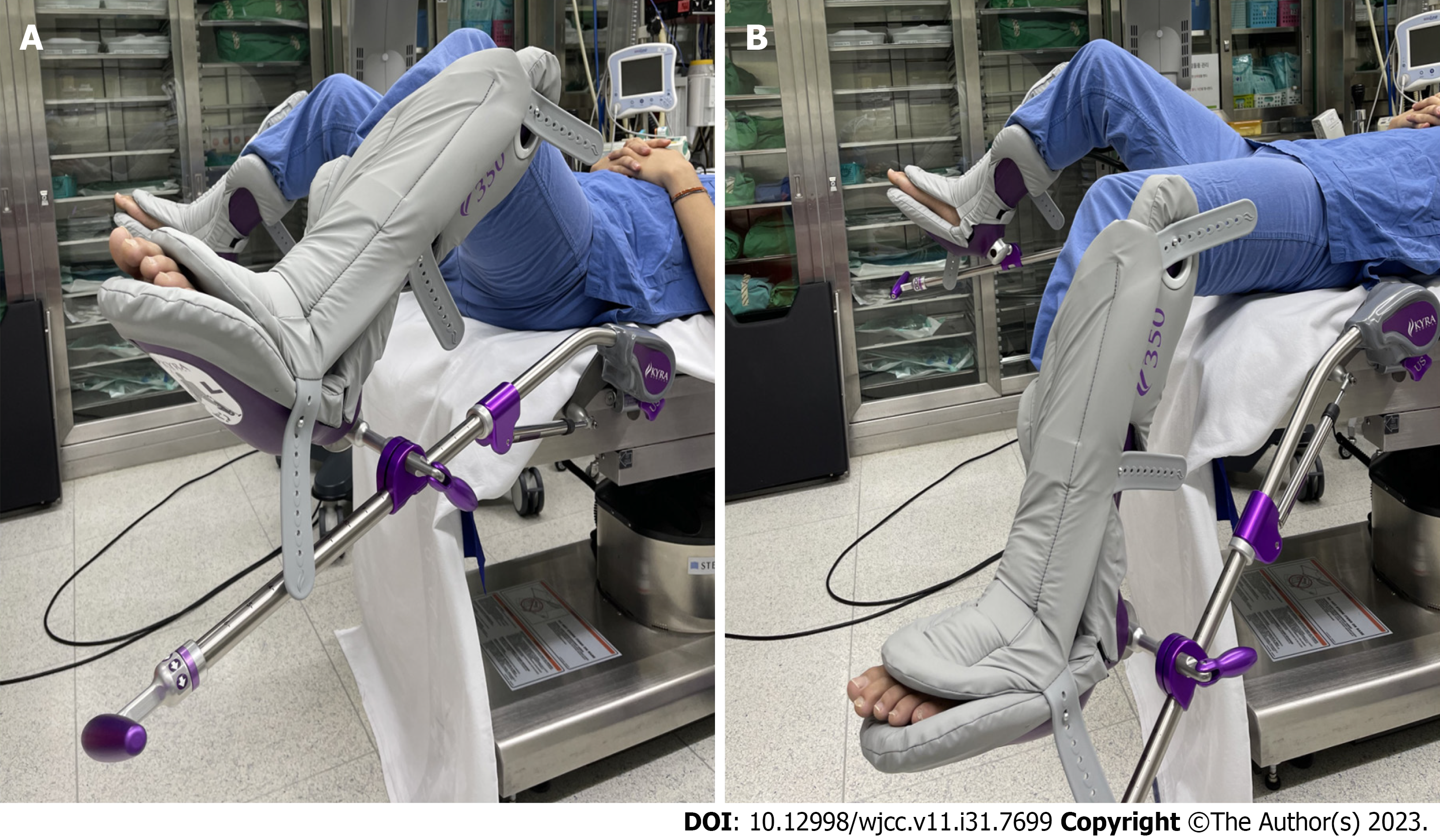Copyright
©The Author(s) 2023.
World J Clin Cases. Nov 6, 2023; 11(31): 7699-7705
Published online Nov 6, 2023. doi: 10.12998/wjcc.v11.i31.7699
Published online Nov 6, 2023. doi: 10.12998/wjcc.v11.i31.7699
Figure 1 The positions adopted by the patient during the operation.
A: The lithotomy position with hip flexion 45°, knee flexion 45°, and thighs apart by 90°. The legs were fixed with support from the boots; B: The patient intermittently performed hip extension on the left side, extending the hip to the neutral position. The patient was maintained in the lithotomy position during surgery, but switched to a position where she extended her hip and leg on the left side several times, always returning to the lithotomy position thereafter. This repetitive posture change may have caused stretching and angulation of the lateral femoral cutaneous nerve.
- Citation: Park HW, Ji KS, Kim JH, Kim LN, Ha KW. Ultrasonographic identification of lateral femoral cutaneous nerve anatomical variation in persistent meralgia paresthetica: A case report. World J Clin Cases 2023; 11(31): 7699-7705
- URL: https://www.wjgnet.com/2307-8960/full/v11/i31/7699.htm
- DOI: https://dx.doi.org/10.12998/wjcc.v11.i31.7699









